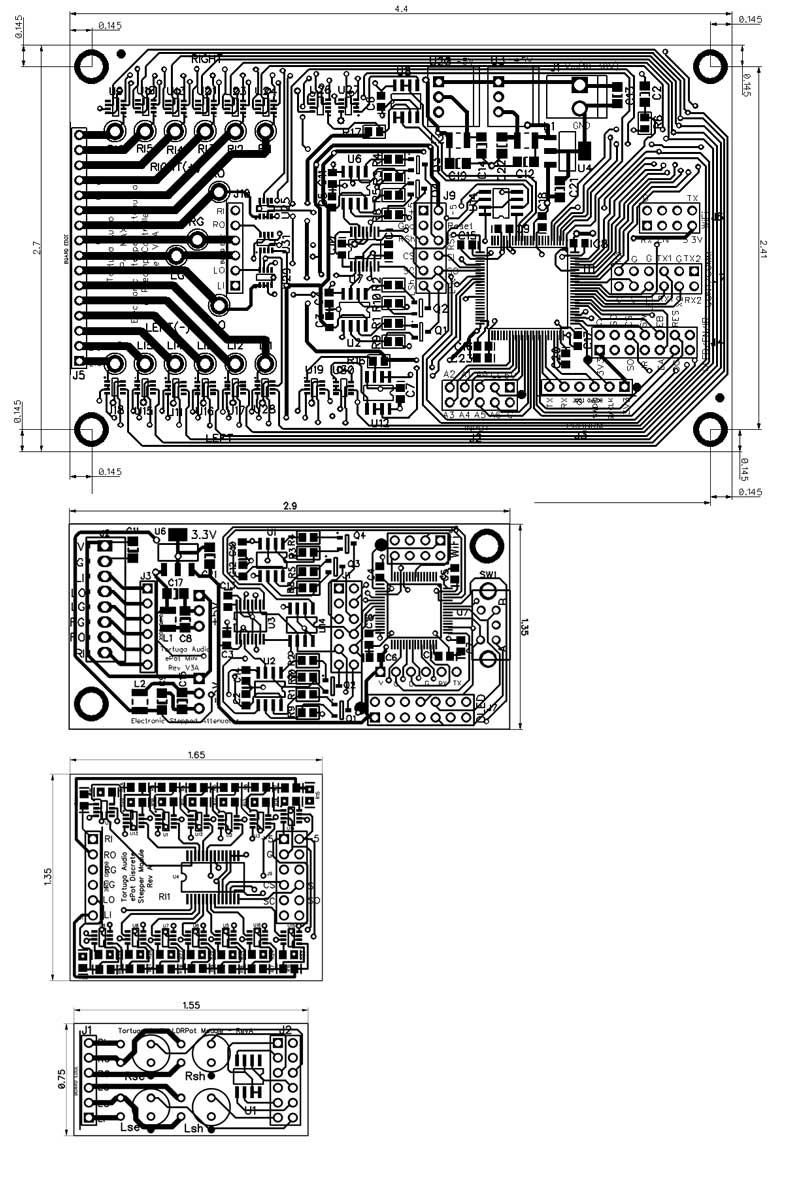Hi All,
Over a year ago I introduced the development of what we were calling the LDRPot, essentially an electronic potentiometer (volume control) that you can use instead of a pot or mechanical stepped attenuator. A year later this work has taken us down some rabbit holes and dead ends but with each iteration things have gotten more interesting and compelling.
The purpose of this post is to give you a brief update on this effort and give a sneek peek into what’s coming as a result. To the inevitable question of how soon and how much I’m going to disappoint and only say as soon as we’re ready.
More info will be forthcoming as we get closer to release. I apologize for the long development cycle on this stuff but we’ve gone through numerous iterations and have made big changes in both the hardware and the software along the way and all of that has taken an enormous amount of time and effort.
The drawing included below shows the relative sizes of the boards discussed herein.
Re-introducing The ePot – The LDRPot is now the new ePot and the ePot is more than the LDRPot. Bear with me as I elaborate on that. The ePot, as the name suggests, is effectively an electronic potentiometer that works in discrete steps (100 – 127) over a 60 dB range. More than just an alternative volume control device it can also serve as an overall preamp controller.
The ePot MAX – The MAX is essentially the next generation iteration of our current V25 preamp controller board. It can serve as a stand alone passive preamp with input switching (up to 6 inputs), visual display driver for an external (256x64) OLED display and provides both remote and manual control. Anyone familiar with our existing LDR.V25 preamp controller and preamps will recognize all this. The new ePot MAX will be the same width at the V25 but is 23% smaller at 4.4 inches long vs. 5.7 or roughly 1 inch longer than a deck of playing cards. There are 3 significant changes to the ePot Max compared to the current V25: 1) the use of analog switches instead of LDRs for input switching/isolation; 2) completely redesigned LDR control system using precision closed loop current control rather than open loop voltage control; and 3) ability to use either a plug-in LDR (light dependent resistor) attenuation module or a new 127 step discrete thin-film resistor attenuation module. The same MAX board will operate with either of these plug-in attenuation boards.
The ePot Mini – The Mini is a shrunken version of the MAX and at 1.35 x 2.9 inches is 1/3rd the size of the MAX or a bit smaller than a typical credit card. The key functional differences are that the Mini has no input switching and has a volume control encoder mounted directly to the board. Thus the ePot Mini can literally replace any existing panel mounted volume control pot or stepped attenuator. If you want to add remote control and a visual OLED display the Mini can do that too. And just like the MAX the Mini accepts either plug-in attenuation module types – LDR or discrete thin-film resistor. A final key difference from the MAX is the Mini can not re-calibrate the LDR module although you can take any LDR module already calibrated by a MAX and plug it into the Mini and go.
The LDR Attenuation Module – The LDR module is a small 0.75 x 1.55 inch board with 4 embedded LDRs that plugs into either the ePot MAX or Mini and provides 100 step 2 channel (stereo attenuation) over a 60 dB range. It contains its own EEPROM memory chip that stores the calibration data of each LDR. You can use an ePot MAX to calibrate the LDR module if needed or you can purchase a discounted replacement LDR module from us provided you return the original module which we will then refurbish.
The Discrete Resistor Attenuation Module – The Discrete module is a 1.35 x 1.65 inch board that also plugs into either the ePot MAX or Mini. It provides 127 step 2 channel (stereo attenuation) over a 60 dB range. Unlike an LDR module it never requires calibration but its impedance is fixed. If you need a different impedance attenuator you’ll need a module built to that impedance spec. This modules uses 28 discrete thin-film resistors that are switched using very low-noise analog switches.
In order of appearance from the top down, here are printed circuit board prototypes for the ePot MAX, the ePot Mini, the Discrete Module and the LDR Module.
